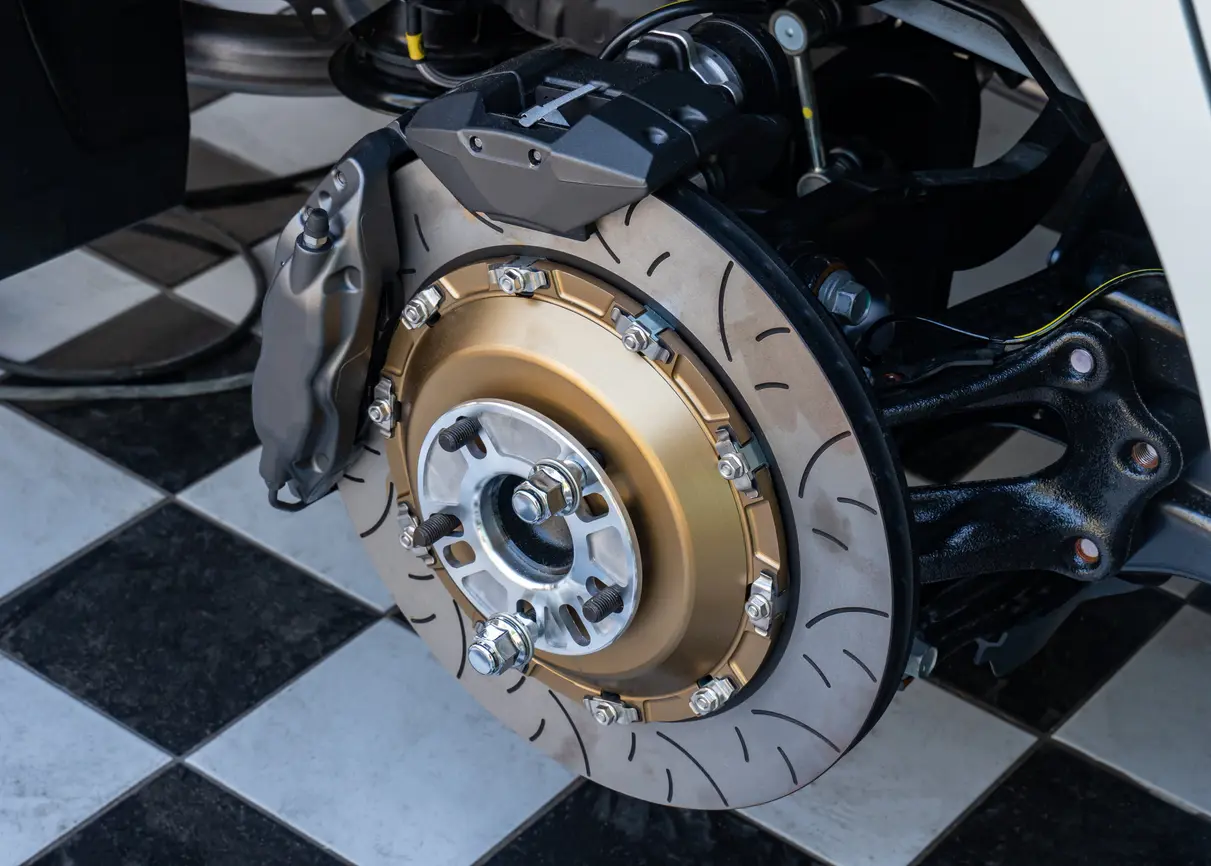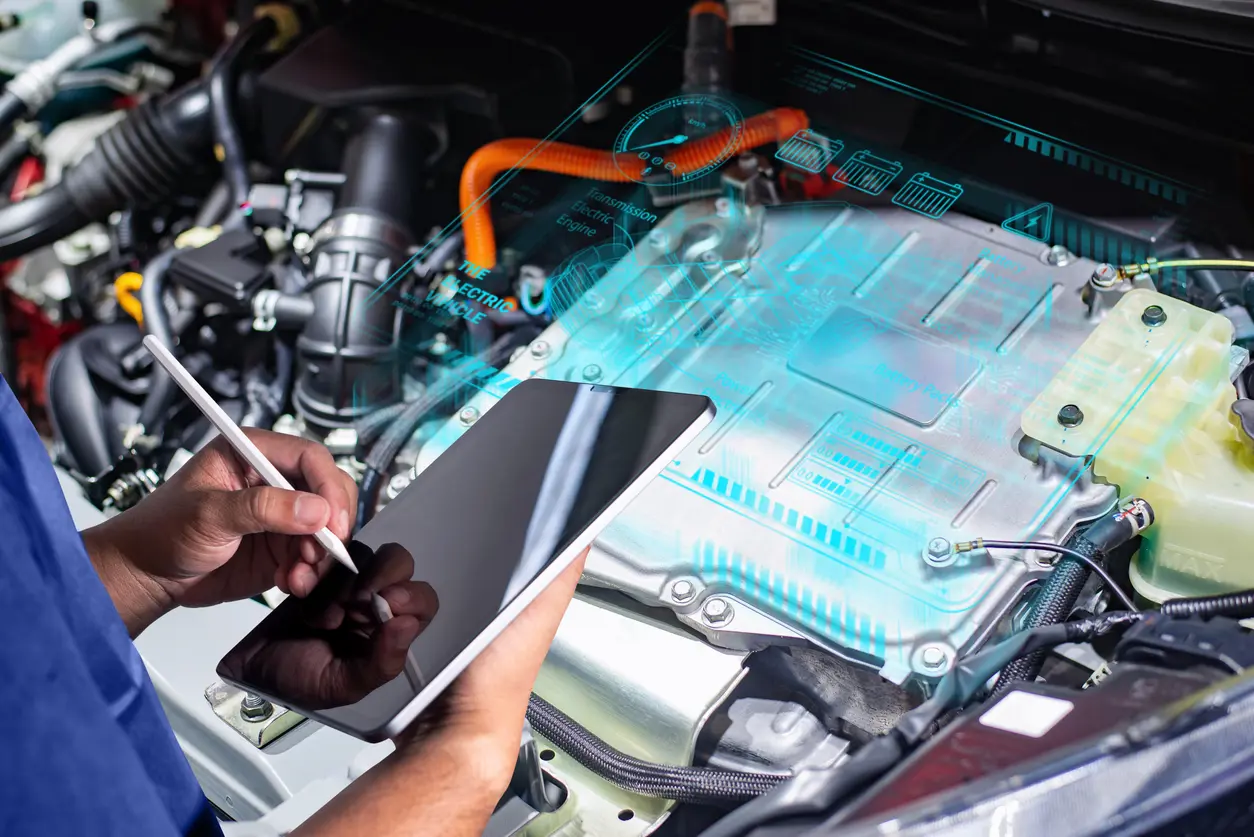How your air conditioner works
Whether you drive a gas-powered vehicle or an EV, all air conditioners work on the same principle: they circulate a refrigerant, which absorbs heat from and returns cooled air to the car cabin.
Where the two vehicle types differ is in the A/C’s power source. Your EV uses its battery to power the A/C system, whereas a gas-powered vehicle uses its engine. This means EV drivers don’t need to drive to bring the A/C on.
Common causes to A/C problems
The nice thing about A/C problems is that you feel their presence immediately: the air blowing out of the vents in the vehicle cabin is cool (instead of cold), warm, or weak. Here are some problems that affect how your A/C works:
Clogged or dirty cabin air filter
You’ll likely find your cabin air filter behind the glove compartment. It should be changed every 12-18 months or every 25,000 km.
Possible symptom: weak air flow coming out of the vents.
Refrigerant leak
Refrigerant circulates through your A/C system as a gas and a fluid. You won’t notice leaks that let out gaseous refrigerant, but if you see oily patches around the air conditioner, then that’s likely refrigerant leaking out of the system.
Possible symptom: a loud, continuous clicking sound when running the A/C.
Evaporator coil problems
The evaporator coil comprises a set of pipes filled with refrigerant. Air is blown over the evaporator to cool, changing the refrigerant from liquid to gas as it absorbs the heat from the air.
Possible symptom: warm air blowing out of the vents.
Clogged condenser
A condenser is another set of coils in an A/C system. This part, as the name implies, condenses the gaseous refrigerant back into its liquid state. When broken, a condenser can’t cool the gas running through it, meaning the refrigerant can’t absorb heat from the car cabin.
Possible symptom: a rattling noise when you turn on the A/C.
Broken compressor
The compressor is the bridge between the evaporator and condenser. If it breaks down, the refrigerant won’t be able to reach the condenser to be cooled.
Possible symptoms: warm or hot air blowing into the cabin and unusual noises when you turn on the A/C.
Electrical system issues
A frayed wire or blown fuse may be the cause of your troubles. Or the A/C system might need to be recharged.
Recharging an A/C system involves replacing the refrigerant. You can recharge your EV’s A/C at home, but this requires equipment you may not have. It should also only be done after an inspection has ruled out other issues.
Possible symptom: hot air blowing out of the vents.
Try these steps first
Some A/C problems are simple to fix. Try resolving your problem with these steps:
-
Find the condenser between the radiator and front grille. Remove any dirt and debris you see.
-
Replace the cabin air filter.
Maintain your EV’s A/C
To avoid expensive repairs, you can help your A/C stay in good condition with these tips.
-
Avoid the temptation to crank the A/C in scorching heat. Instead, aim for “comfortably warm,” such as 23.5˚C. This will let you stay cool while saving your A/C from working excessively hard.
-
Run your A/C on defrost mode for ten minutes each week, even in winter, on the coolest setting with the fan at maximum speed. This’ll help maintain gas pressure and keep the compressor running well.
-
Pre-cool your EV while it’s still charging. This can improve battery efficiency all around while also saving valuable energy for the road.
Pay attention to any changes in your A/C system, including strange noises, smells, or warm air. If you notice any problems, drop by your local NexDrive service centre to speak with an automotive technician.
Other Resources

Why do electric car tires wear out so fast?
EV tires experience increased tread wear because of instant torque and unsprung weight. Learn why electric vehicles lead to worn-out tires and how to extend the lifespan of EV tires with proper maintenance.

Why regenerative braking is bad for your brake pads
Regenerative braking improves energy efficiency, but can cause brake pad issues because of reduced mechanical brake use. Learn how to maintain your brake system and prevent costly repairs in this article.

Does an EV need regular general maintenance?
Although EVs require less maintenance than gas-powered vehicles, they still need regular care. Learn about battery health, brake maintenance, and more here.
